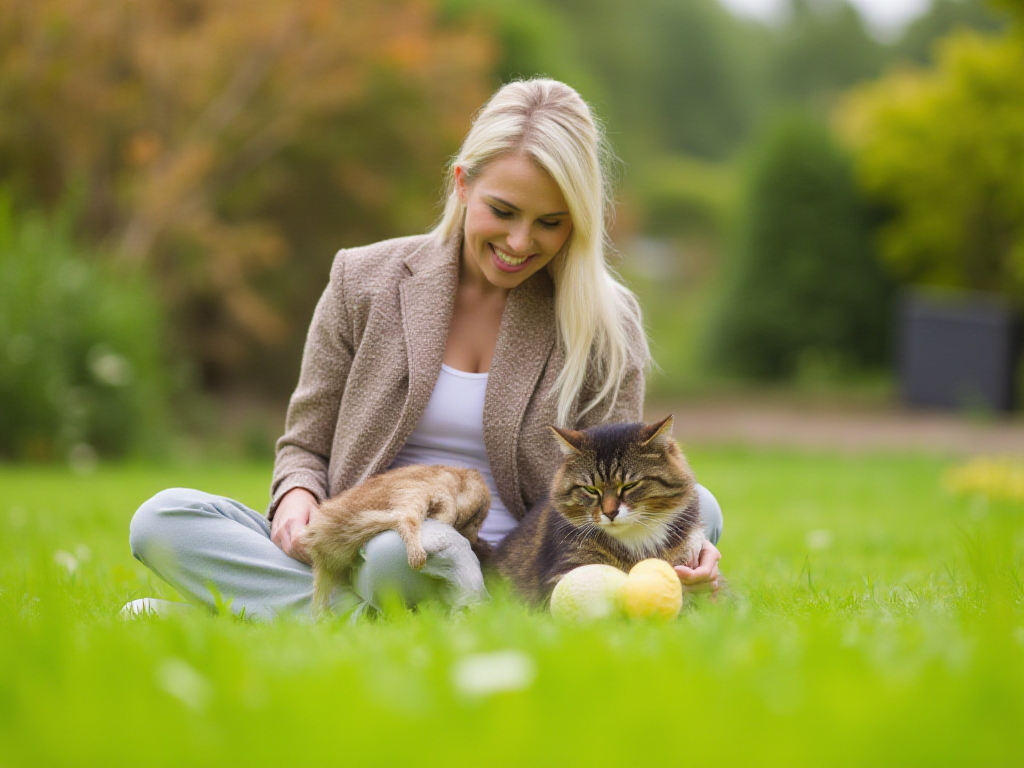
How to Build a Harmonious Relationship with Your Cat
Share
Understanding Your Cat’s Unique Personality
Every cat is unique, with its own quirks and preferences. Understanding their personality is the first step toward a harmonious relationship.
The Independent Nature of Cats
Unlike dogs, cats are naturally independent. They often prefer to set the pace for interactions and need their personal space respected.
Recognizing Your Cat’s Temperament
Some cats are outgoing and playful, while others may be shy or reserved. Spend time observing your cat to identify their preferences and tailor your approach accordingly.
Learning to Respect Their Boundaries
Cats dislike being forced into situations. If they walk away during petting or playtime, let them be. Giving your cat autonomy builds trust.
How Cats Communicate
Understanding feline communication is key to interpreting their needs and emotions.
Decoding Feline Body Language
- Ears: Forward-facing ears indicate interest, while flattened ears may signal fear or aggression.
- Tail: A raised tail shows happiness, while a puffed-up tail signifies fear.
- Purring: Often a sign of contentment but can also indicate stress.
Vocalizations: What Your Cat is Telling You
Cats use a range of sounds, from meows to chirps and growls, to express themselves. Pay attention to their tone and frequency to better understand their needs.
Creating a Comfortable Environment
A cat-friendly home encourages relaxation and positive behavior.
Setting Up a Safe and Stimulating Space
Include cozy beds, climbing trees, and scratching posts. Provide quiet spaces for retreat when your cat feels overwhelmed.
Essentials for a Cat-Friendly Home
- Clean litter boxes in accessible locations.
- Fresh food and water in designated, quiet areas.
- Secure windows or use screens to prevent accidents.
Reducing Stressful Stimuli
Minimize loud noises, sudden movements, or frequent changes in the home environment. Use calming pheromone diffusers if necessary.
Strengthening Your Bond Through Daily Interactions
Building trust with your cat happens gradually through consistent and positive interactions.
Engaging in Playtime
Interactive play strengthens your bond and keeps your cat active.
- Use feather wands or laser pointers to simulate hunting behavior.
- Rotate toys to keep play sessions exciting.
Showing Affection the Right Way
Not all cats enjoy constant petting. Learn their preferences:
- Focus on areas like the chin, cheeks, or the base of the ears.
- Avoid touching sensitive spots like the belly unless your cat initiates it.
Training Your Cat with Positive Reinforcement
Reward good behavior with treats or praise. Avoid punishment, as it can create fear and damage trust.
Resolving Common Conflicts Between You and Your Cat
Conflicts can arise, but with the right approach, they’re often easy to resolve.
Addressing Behavioral Issues
- Scratching Furniture: Provide scratching posts and use deterrent sprays on off-limits areas.
- Aggression: Identify triggers and give your cat space to calm down.
Managing Misunderstandings Between Cats and Humans
Cats might act out due to stress or unmet needs. Ensure they’re stimulated and their environment is enriching.
Building Long-Term Harmony with Your Cat
Harmony requires adaptation and understanding as your cat’s needs evolve over time.
Adjusting to Life Changes Together
Major life events, like moving or introducing a new pet, can stress your cat. Introduce changes gradually to minimize disruption.
Celebrating Your Unique Bond
Every cat-human relationship is special. Take time to appreciate your cat’s quirks and create cherished memories together.
FAQs About Living in Harmony with Cats
Why Does My Cat Seem Aloof?
Cats may appear distant because of their independent nature. Give them space, and they’ll often come to you when ready.
How Can I Help My Cat Adjust to a New Home?
Provide a quiet, secure area with familiar items like their bed or toys. Gradually introduce them to the rest of the house.
What’s the Best Way to Discipline a Cat?
Use positive reinforcement for good behavior. Never yell or physically punish your cat, as this can damage trust.
Why Does My Cat Suddenly Stop Using the Litter Box?
This could indicate stress, dirty litter, or a medical issue. Consult your vet if the problem persists.
How Do I Know If My Cat is Happy Living with Me?
A happy cat exhibits relaxed body language, purrs often, and engages in play and affection.
Can Cats and Dogs Coexist Peacefully?
Yes, with proper introductions and supervision, many cats and dogs can live harmoniously.